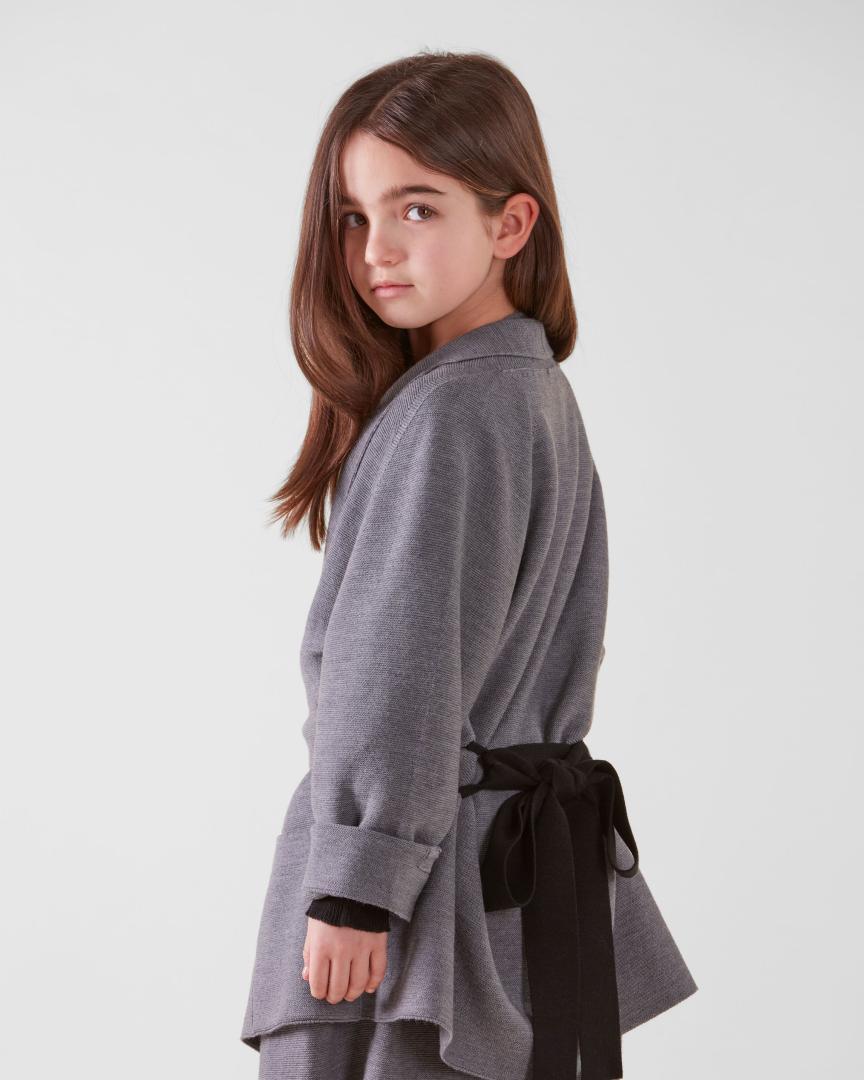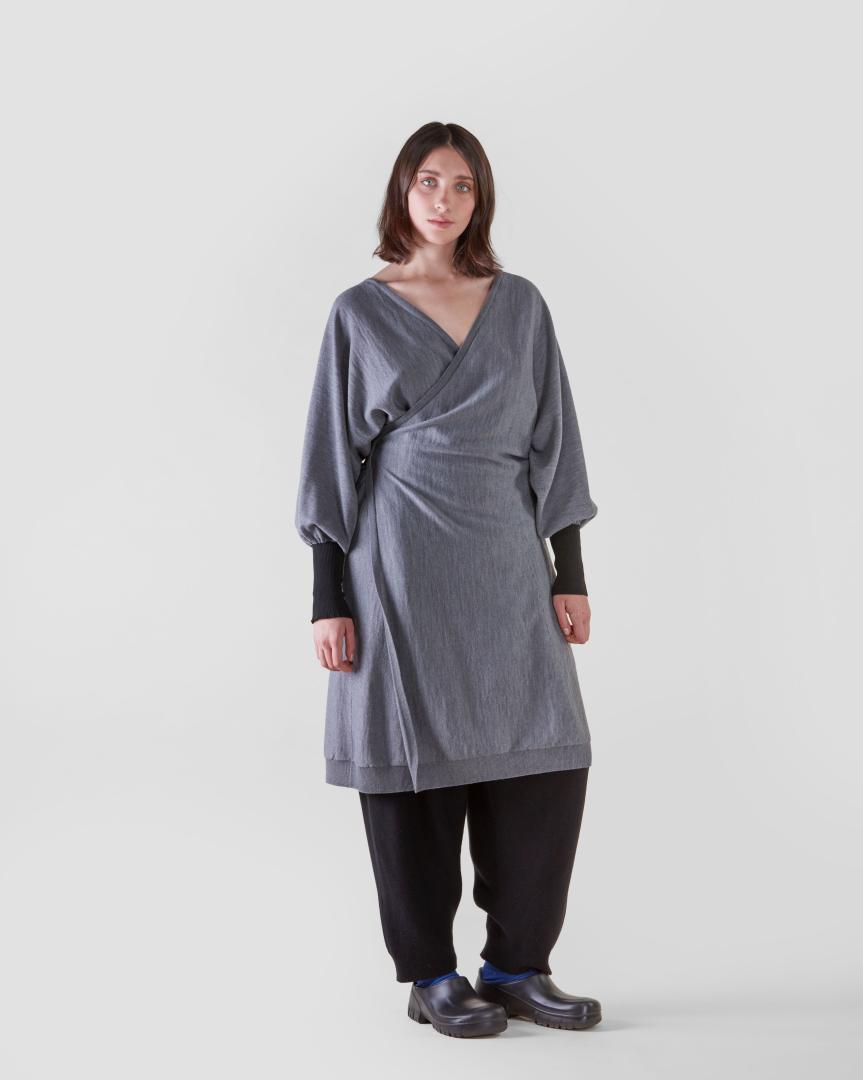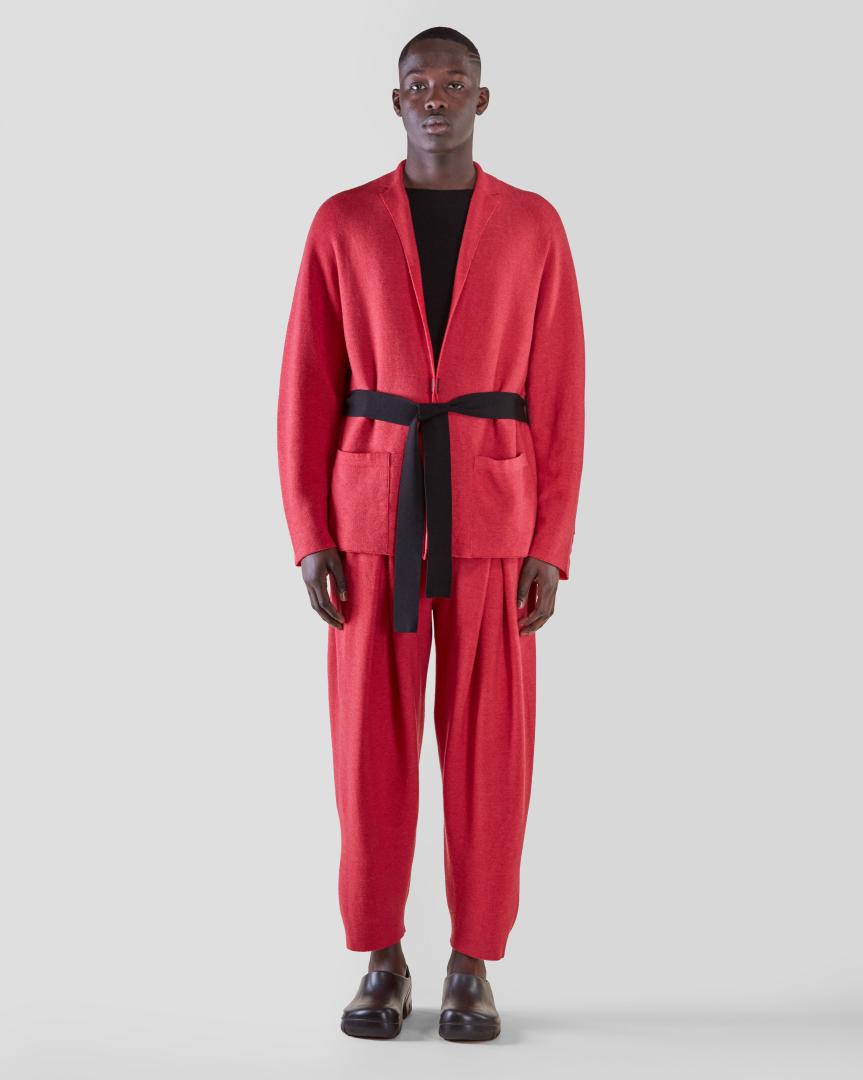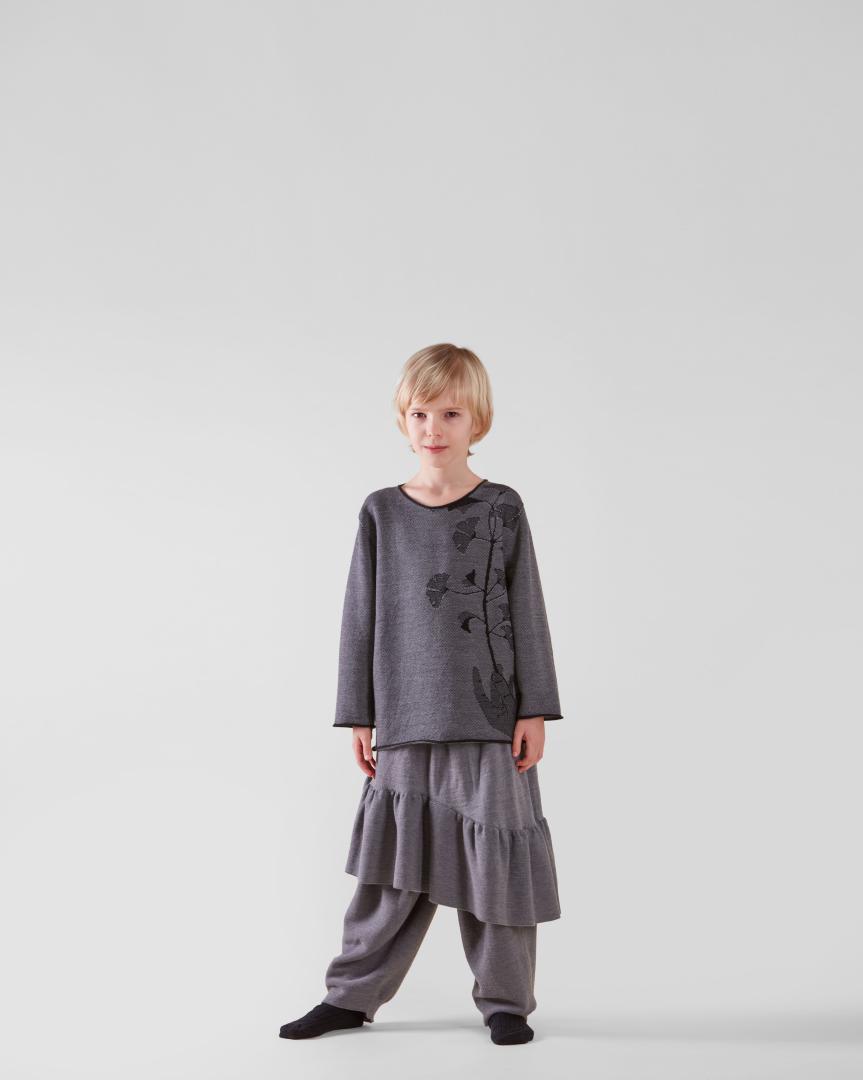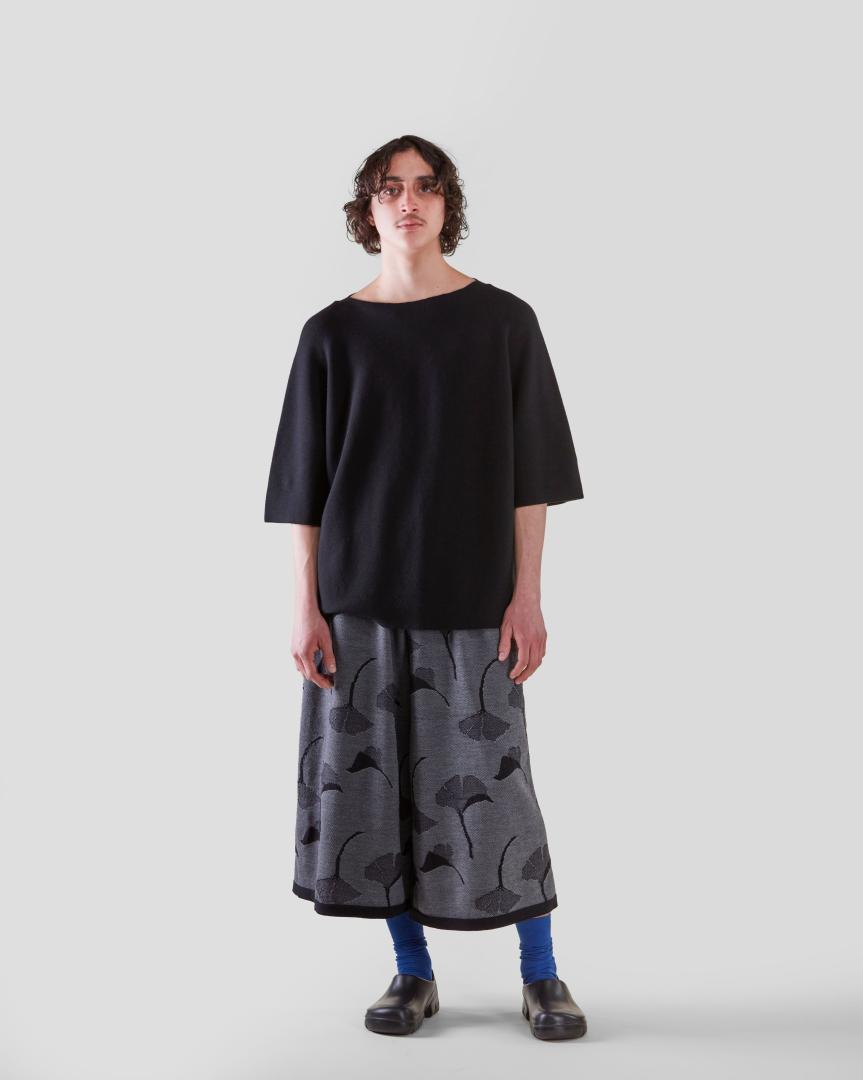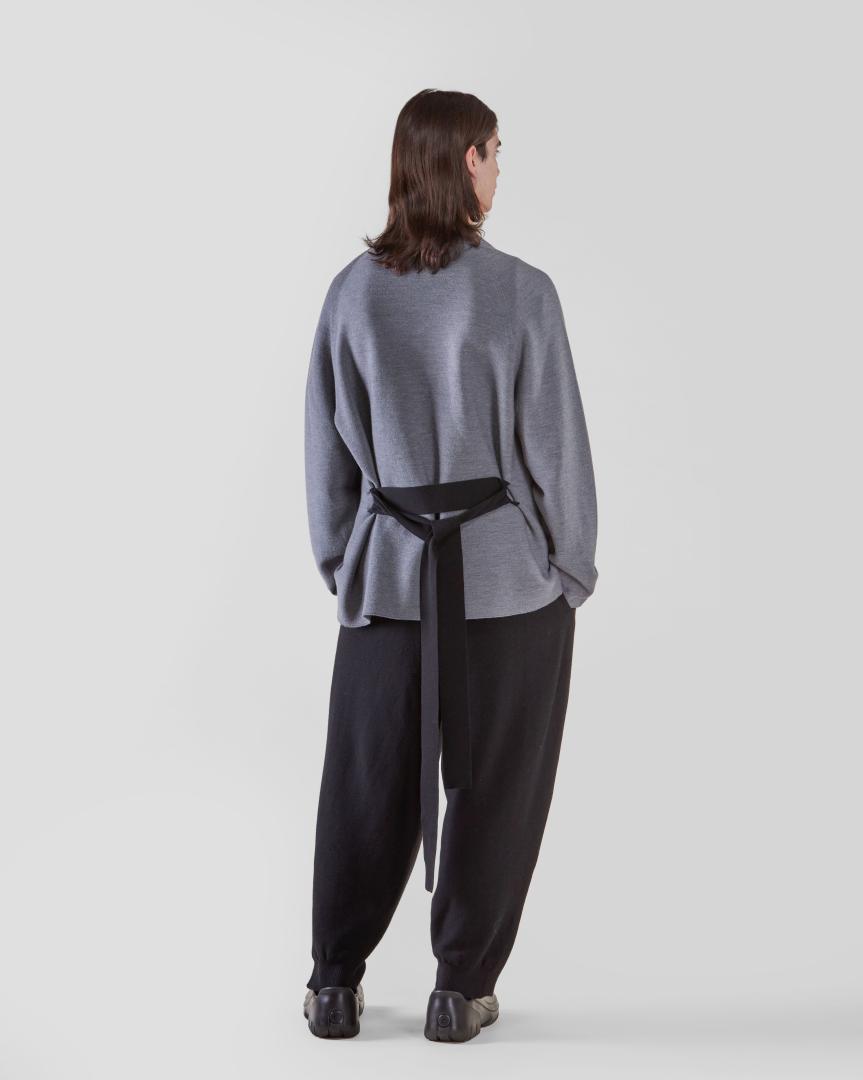cancellato UNIFORM
Basic information
Project Title
Full project title
Category
Project Description
cU is a knitwear brand that offers contemporary, comfortable and versatile clothes, designed to fit the bodies of as many people as possible, without exclusions of size, age, gender or physical abilities.
cU responds to the main problems of the fashion system, proposing a production model that drastically reduces its environmental footprint: zero waste from prototyping to production, clothing produced on demand and designed to last over time, a fluid model from development to final use.
Geographical Scope
Project Region
Urban or rural issues
Physical or other transformations
EU Programme or fund
Which funds
Description of the project
Summary
cU is a knitwear brand that offers contemporary, comfortable and versatile clothes, designed to fit the bodies of as many people as possible.
To do so, cU works on engineered shapes and elasticity, natural and enhanced through knitwear. A continuously developing research and design path, which aims to create clothing without exclusion of size, age, gender or physical abilities.
Each cU garment was designed to comfortably fit different male and female bodies, which would normally wear standard sizes XS to XL.The cU sizes refer, instead, to height, with the aim of dressing as many people as possible, from 1.30m to 1.90m and above.
The extreme versatility and adaptability of the cU garments facilitates sharing and passing from hand to hand, allowing for the optimization of purchases and the extension of the life of the garments themselves.
Finally, cU offers a new model of production, applicable on a large scale, that drastically reduces its environmental footprint: zero waste from prototyping to production, clothing produced on demand and designed to last over time, a fluid model from development to final use.
While the actual store is online, cU will present a series of itinerant pop-up stores in order to engage local communities and allow people to directly try on the whole collection and place the orders with the support of our staff. The whole set-up of the pop-up store was designed for us by a team of architects, applying the same design thinking we used to design our collections. We talked to people first, listening to their needs and we integrated them into the design process. In this way we designed a beautiful space that welcomes people with disabilities and allows them to move and shop with autonomy, enjoying the experience like anyone else. An accessibility so naturally integrated to be invisible to the eye, but absolutely new and functional for those who need it.
Key objectives for sustainability
cU was developed with a holistic approach, looking at all the aspects connected within every step, from prototyping to retail to the garment's life, in order to minimize its environmental impact.
cU garments are composed of a minimum 94% of high quality and certified natural fibers. The garments are made in a small Italian factory using a 3D knitwear technology that allows to create a finished garment directly from the machine, without any material waste, pretty much like with a 3D printer. The absence of seams, usually the weakest part of clothing, ensures more resistance.
Working with the 3D technology allows a production on demand, which can be easily scaled. cU, selling exclusively online, produces only the garments actually sold, eliminating any stock.
The numeric control programs of the 3D machines can be easily shared with factories owning the same technology in different parts of the world and so the orders produced and shipped from a shorter distance. The more the demand increases, the more factories we can find to get closer to each order, reducing the environmental impact proportionally with the growth of the sales. In this way we would also work with different smaller factories instead of relying only on huge productions from one or few big companies.
Each garment is designed to dress both male and female bodies usually wearing sizes from XS to XL, optimizing purchases (each garment can adapt to different bodies and to the body changes throughout life) and favoring the hand-over of the garment to prolong its life.
A multi-steps plan of research and development for sustainability is already in place as we are now obtaining a license to start using a 3D software prototyping program in order to minimize prototyping waste and we are developing a new highly sustainable and performative yarn. The next step is going to be the development of a personalized virtual try on feature to help the customers with their purchase and reduce product returns.
Key objectives for aesthetics and quality
The aim of cU is to create a new uniform for the everyday work/life of the future: sophisticated, functional and versatile, inclusive and easy to wear. As fluid working practices become more frequent (freelance jobs, smart working, digital jobs etc.), the boundaries between personal life and work fade away. Today's fluid lifestyle requires a fluid wardrobe.
Work uniforms are garments that do not get old, are not tied up to trends and give protection thanks to their resistance to heat, water and coldness. They are usually genderless, comfortable and strong. We took inspiration from their functionalities and we translated them into clothes that are recognizable, yet suitable for the everyday life.
Putting comfort as the main feature, we created garments easy to be worn, using elastic waistbands and cuffs and eliminating closures like buttons and zips. We only use soft materials that feel great to the skin and with the best performance in terms of breathability, body temperature control and odor resistance. Each garment was designed to perfectly fit both male and female bodies without compromising the style, yet adapting itself to different body types, in order to make style and beauty accessible to everyone.
To add a physical experience and to allow people to try on the clothes in person with the assistance of our staff, we have planned a series of itinerant pop-up stores, designed specifically.
In the pop-up store the exhibition of the entire collection is designed to be immersed in a dreamlike landscape, between flowers and soft pink gold islands, according to a layout that allows you to move freely within the space. Every aspect of the installation has been studied by a team of architects in order to be accessible by people with disabilities, allowing them to move and shop with autonomy, enjoying the experience like anyone else. An accessibility so naturally integrated to be invisible to the eye, but absolutely new and functional for those who need it.
Key objectives for inclusion
cU was born with the idea of bringing people at the centre of the design process. With the aim of being as inclusive as possible, our journey started from talking with people, listening to their needs and issues with fashion. We spoke also with people with disabilities, people affected by dwarfism, transgender people and women who received a mastectomy. The same and other people are then involved during the fitting sessions in order to try the prototypes and give us feedback. Once an order is delivered, we ask feedback from the client in order to understand if there is something we can make better.
We do not expect to answer every need with each garment, but listening to people before designing can get us as close to it as possible. And then we will add to the collection, time bye time, pieces more related to specific needs, with the challenge of making them look attractive to everyone. We just started a journey of research and development to keep improving our offer in terms of inclusivity, user experience and clothing performances.
Being inclusiveness our main goal, we have also worked to keep our prices as affordable as possible, making luxury more accessible. With a combination of clever design, materials and production optimization, absence of stock, online selling and keeping reasonable margins, we managed to make accessible what normally would be at least three times more expensive in stores. Our price range now goes from 150 euros (excluding accessories) to 350euros for the more elaborate pieces. The adaptability of the garments allows sharing and purchase optimization for the customer.
Results in relation to category
At the time of this writing, we just officially launched the project, opening the website and e-commerce to the public. The launch was also presented within the website of the Italian Chamber of Fashion, which supported the project by placing the launch in the official calendar of Milan Fashion Week. The first physical event, an experiential pop-up store, will be held in Milan during the Design Week, underlining the dual nature of the project, in between design and fashion.
It is so too early to see the actual results of the brand, but there is actually something we can already talk about. The first real impact of cU was how normal people, people with disabilities and associations of disabled people reacted just from being taken into account. Not at the end, just as a marketing tool, but at the very beginning of the project, before even thinking about the garments. From being listened to and considered valuable as clients just like anyone else. From our intent of creating something beautiful for everyone and not only something functional just for them. The reaction of people trying on the first pieces was priceless.
While for everyone we are offering an high quality, stylish, comfortable, affordable and sustainable alternative to the mainstream fashion (with the market now split in two, super expensive luxury on one side and fast fashion on the other), for many categories of people, who have always been excluded, we are offering access to beauty, and not only functionality, and the possibility of feeling included just like anyone else.
How Citizens benefit
Direct citizen participation is at the core of cU. It was part of the first steps and crucial throughout the whole development of the brand, as it will be at its every step in the future.
Talking to different people with different needs and life experiences before designing new pieces, doing fitting sessions not only with models, as it usually happens in fashion, but with those people, normal people, with different bodies, shapes, heights and abilities, it is crucial to design products addressed to people. A product that doesn't live only on special events and instagram feeds, but that has to live with people in their everyday life for a long time.
During those discussion and try on sessions, we talked about fitting shoulders on jackets, about movement difficulties and what would be the best options to substitute zips and buttons, we talked about being extremely short and not finding clothes, men complaining the lack of comfort both in formal and everyday attire, we talked about asymmetry or having body parts with different sizes, and so on.. We kept in account all we learned and we are still learning from those who have a direct and personal experience, and so far we received enthusiastic feedback. But this is only the beginning, there are many people still to engage with and many more designs that we can develop.
Physical or other transformations
Innovative character
What normally happens in the fashion industry is that a huge amount of waste is produced throughout the whole supply and distribution chain. Material waste during prototyping and production, material leftovers and/or produced but then cancelled fabrics, which can't be sold to third parties because they contain logos or iconic prints. And finally the whole scandal of garments leftovers, often burned out by the luxury houses who don't accept to sell them for cheaper, risking to damage their luxury status. On the other side there is the huge problem of fast fashion and disposable clothing. Not to mention the human exploitation, water pollution and lack of inclusivity. The list could go on and on. While most of the brands are starting to tackle only one or few of those issues, often falling into green washing dynamics, cU is doing everything possible to address all the situations mentioned above, with a plan of continuous improvement.
Exactly the same, if not worse, is happening in terms of inclusivity, where entire categories of people are completely left out from the fashion industry. Some have parents who can help sewing and adapting clothes for them, others pay someone else to do that job, most of them just accept that wearing what they like or something that can fit their bodies is just not an option. And there is also a matter of autonomy and comfort that can't be ignored. With cU we are taking into account different needs, trying to make clothes that can fit as many people as possible, while being extremely comfortable and easy to wear. The difference with the companies making specific clothes for disabled people is that cU is making clothes addressed to everyone, while taking into consideration also, but not exclusively, disabled people's needs, in order to create real inclusivity. As our journey just started, we will continue to work close to people in order to improve existing designs and to add more.
Learning transferred to other parties
We knew from the beginning that the potential of creating cU wasn't just related to the product we are offering, but also to the design, production and distribution model we are placing in the market.
What we are doing is a radical change in the system that could be applied, partially or completely, to many other fashion companies, and become the starting point for the development of new brands. The technologies are already available for everyone, what was missing was the creation of a complex (not complicated) system capable to connect all the dots (digital prototyping - natural materials - inclusive design - zero waste manufacturing - production on demand - wearability optimization - a dislocated production in order to do mostly national shipping with the increasing of the orders from specific areas).
At the same time, to rethink sizes and create garments that adapt to real bodies, instead of being the body to adapt to standardized sizes, it is something that every fashion company can do. The same goes for opening up the offer to those people usually left out from the fashion design tables. It would be amazing if cU, through results and visibility, could be a push in that direction and we would be more than happy to share the experience we gained in the past years working on this project.
Finally all the work we are doing to create a beautiful and accessible retail experience inside pop-up stores, redesigning exhibiting racks, sitting corners and fitting rooms could as well be applied to all retail stores. Currently stores are either not accessible for disable people (accompanied or, worst, alone) or disabled people have dedicated spaces that are functional but not aesthetically pleasing or integrated with the surrounding design and style, making the experience usually frustrating for the most.

